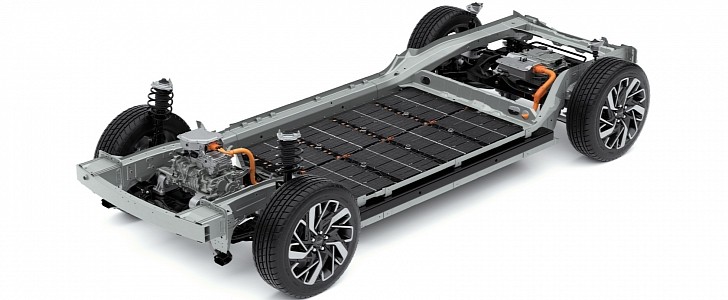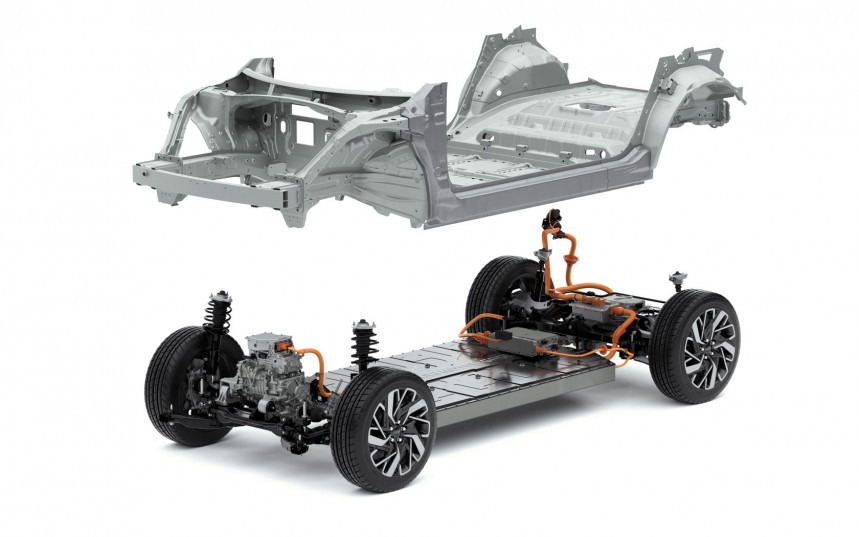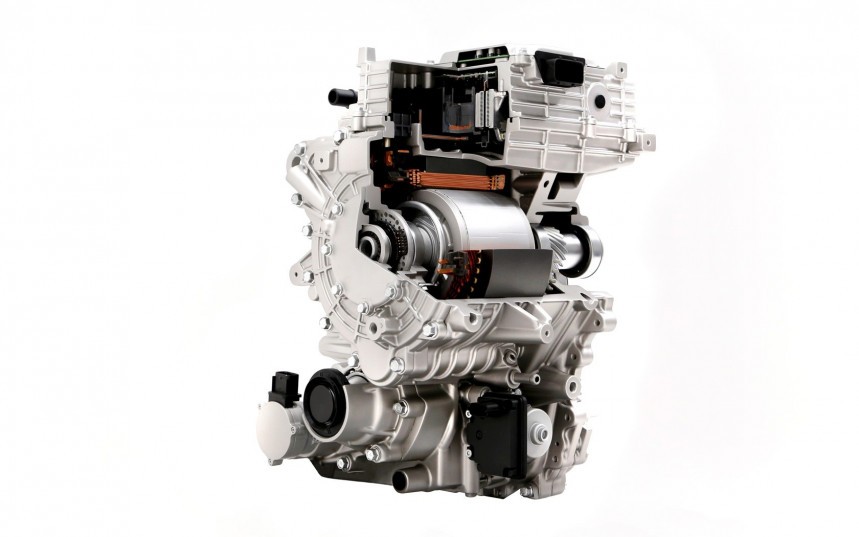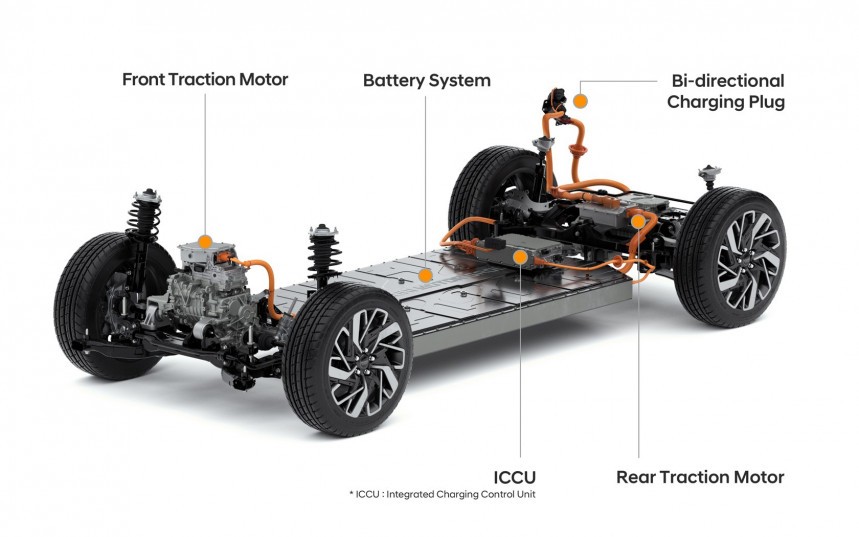The Korean manufacturer recognizes that the automotive industry is rapidly moving towards an all-electric era and has recently unveiled its first dedicated BEV platform called E-GMP (Electric-Global Modular Platform). It promises to be the building block for a zero-emission future, offering a modular architecture that can be adapted to any type of vehicle.
Their first all-electric vehicle was the Hyundai BlueOn, a limited-production subcompact hatchback launched ten years ago in the Korean market. It was based on a first-generation Hyundai i10 and had a modest range of 140 km (87 miles) on a full charge.
The new E-GMP platform demonstrates how much progress has been made in the new decade. Developed from the ground up to serve as the base of future all-electric models for the group’s Hyundai, Kia and Genesis brands, it provides various advantages compared to the existing platforms, which were initially developed for ICE compatibility.
Through modularization and standardization, the new platform eliminates the need for extensive modifications, thus greatly simplifying the development process. This flexibility allows engineers to use the E-GMP as a building block for any type of EV, from sedans to crossovers and full-size SUVs, thanks to its short front and rear overhangs.
The compact power electric system features a powerful motor, transmission, and an inverter, which are all built into a single module. Hyundai states that the high-speed motor is smaller, lighter, and much more capable than existing units but haven’t released any figures yet.
It is controlled by the inverter power module, which uses silicon carbide semiconductors. This highly advanced unit should increase overall efficiency by almost 3 per cent. The carmaker says that this translates into a 5 per cent increase in the overall driving range.
The platform is constructed to provide rear-wheel drive, but thanks to its modular design, a dual-motor layout can be used to enable all-wheel-drive and an increase in performance.
All future vehicles based on this platform will use the same standardized battery module. It features pouch-type standard cells that can be packed in various quantities to fit any type of vehicle.
The focus on performance led engineers to integrate the battery pack into the platform’s structure, between the two axles. This has several advantages as it provides more space for interior components, increases the overall rigidity of the chassis, and lowers the center of gravity. All these things translate into increased stability and improved handling.
Looking to the future, Hyundai has invested in IONITY, Europe’s leading high-power charging network, which operates 308 high-power charging (HPC) stations with a charging capacity of up to 350 kW.
The E-GMP platform will offer 800V charging capability as standard employing what the Korean carmaker calls the world’s first patented multi-charging system. It uses the motor and inverter to boost the system from 400V to 800V for stable charging compatibility.
BEVs based on this platform will be capable of a maximum range of over 500 km (311 miles) with a fully charged battery. Using 800V technology, the pack can be charged to 80 percent in about 18 minutes, while up to 100 km (62 miles) of driving range can be added in just 5 minutes.
Another interesting feature is the E-GMP’s newly developed Integrated Charging Control Unit (ICCU), which enables a new vehicle-to-load (V2L) function. This means that future Hyundai Group BEVs will be able to supply up to 3.5 kW of power which can be used to operate electronic devices or even charge other electric vehicles.
Development of new vehicles based on this platform has already started as the group plans to introduce a total of 23 BEV models worldwide by 2025 under the Hyundai IONIQ, Kia, and Genesis brands.
The new E-GMP platform demonstrates how much progress has been made in the new decade. Developed from the ground up to serve as the base of future all-electric models for the group’s Hyundai, Kia and Genesis brands, it provides various advantages compared to the existing platforms, which were initially developed for ICE compatibility.
Through modularization and standardization, the new platform eliminates the need for extensive modifications, thus greatly simplifying the development process. This flexibility allows engineers to use the E-GMP as a building block for any type of EV, from sedans to crossovers and full-size SUVs, thanks to its short front and rear overhangs.
It is controlled by the inverter power module, which uses silicon carbide semiconductors. This highly advanced unit should increase overall efficiency by almost 3 per cent. The carmaker says that this translates into a 5 per cent increase in the overall driving range.
The platform is constructed to provide rear-wheel drive, but thanks to its modular design, a dual-motor layout can be used to enable all-wheel-drive and an increase in performance.
The focus on performance led engineers to integrate the battery pack into the platform’s structure, between the two axles. This has several advantages as it provides more space for interior components, increases the overall rigidity of the chassis, and lowers the center of gravity. All these things translate into increased stability and improved handling.
Looking to the future, Hyundai has invested in IONITY, Europe’s leading high-power charging network, which operates 308 high-power charging (HPC) stations with a charging capacity of up to 350 kW.
The E-GMP platform will offer 800V charging capability as standard employing what the Korean carmaker calls the world’s first patented multi-charging system. It uses the motor and inverter to boost the system from 400V to 800V for stable charging compatibility.
Another interesting feature is the E-GMP’s newly developed Integrated Charging Control Unit (ICCU), which enables a new vehicle-to-load (V2L) function. This means that future Hyundai Group BEVs will be able to supply up to 3.5 kW of power which can be used to operate electronic devices or even charge other electric vehicles.
Development of new vehicles based on this platform has already started as the group plans to introduce a total of 23 BEV models worldwide by 2025 under the Hyundai IONIQ, Kia, and Genesis brands.











